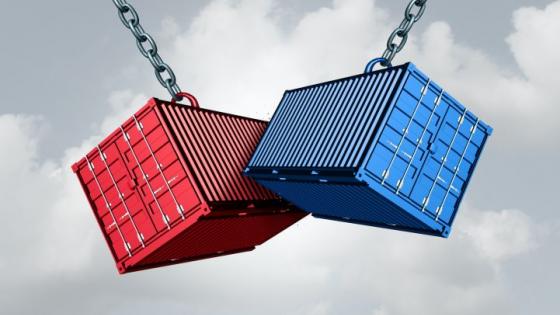Multilateral cooperation in trade policy is the safeguard against trade wars. When governments set trade policy outside trade agreements, they exploit their market power by shifting domestic demand towards domestically produced products and away from foreign produced products. The larger the importer’s market power, the larger the reduction in the relative price of its imports obtained through a tariff increase. This income transfer from foreign to domestic producers is inefficient from a global perspective, as higher taxes reduce the overall size of world markets. More importantly, it is likely to be reciprocated by the importer’s trading partners who will retaliate with higher tariffs as they try to exploit their own market power. Ultimately everyone ends up facing much higher tariffs and much smaller world markets.
The prevention of the inefficiencies associated with trade wars is the fundamental rationale behind cooperation in trade agreements identified by Bagwell and Staiger (1999) and recently reviewed in Bagwell et al. (2016).1 Their basic idea is that the two pillars of the WTO – reciprocity and non-discrimination – ensure that the temptation to use tariffs to exploit the importer’s market power at the expenses of its export partners gets neutralised. In other words, WTO members are willing to accept not exploiting their market power when setting tariffs as long as other members do the same. Through eight rounds of trade negotiations, this has led to an 85% reduction in average tariffs since the creation of the GATT, the predecessor to the WTO, in 1947.
Importantly, Grossman and Helpman (1995) have shown that the neutralisation of market power is also present when tariffs are not only explained by market power, but also by political economy forces such as industry lobbying. Cooperation still neutralises the market power rationale behind tariff setting, while leaving other forces unchanged. This explains why positive tariffs are still observed even though market power forces have been neutralized.
The existing empirical evidence supports the idea that cooperation in tariff setting neutralises market power forces. Bagwell and Staiger (2011) show that new WTO members offer larger tariff cuts in sectors in which they have more market power. Broda et al. (2008) show that non-WTO members set tariffs that are proportional to their market power. In a recent paper, we show that when tariffs are set cooperatively within the WTO system, the market power rationale behind tariff setting gets neutralised, and political economy forces drive the observed cooperative tariffs (Nicita et al. 2018).
A trade war will lead to substantial increases in tariffs
There are growing signs that a trade war is possible, and that the multilateral trading system may not be able to prevent it (Bown, 2017, 2018). A question we may ask is what will happen with tariffs around the world if countries were to move from cooperative tariff setting within the WTO to non-cooperative tariff setting outside the WTO, leading to a trade war where countries fully exploit their market power.
Using a multi-industry model of trade, Ossa (2014) estimates that the average increase in protection is around 60 percentage points for six of the world’s largest trading partners (the US, the EU, China, Brazil, India, and Japan). We estimate the market power of every WTO member at the tariff line level, as well as the extent to which tariffs are set cooperatively or non-cooperatively. Indeed, the WTO system provides exceptions to its rules that allow member countries to set tariffs non-cooperatively. Using our estimates of market power and taking into account the institutional features of the WTO that allow member countries to set tariffs non-cooperatively as well, we find that the increase in tariffs would be half that estimated by Ossa (2014). These are still very large increases in tariffs. The simple average tariff in the US would increase by 14 percentage points, and in the EU by 25 percentage points. In countries with less market power, the increase would be much smaller. Burkina Faso or Guyana, for example, would increase their tariffs by less than 1%.
To assess the cost for exporters of such a trade war, we then calculate the increase in tariff protection experienced by the average exporter in each WTO member country. The average world exporter experiences a 32 percentage point increase in tariffs, but this varies depending on the composition of the export bundle and bilateral trade flows, as illustrated in Figure 1.
Figure 1 Average tariff increase faced by exporters in case of trade war
Note: (1) We calculated tariff increases in every country as the move from cooperative tariffs to non-cooperative tariffs. Non-cooperative tariffs are given by each country optimal tariff in the presence of market power. These are given by the inverse of the export supply elasticity of the rest-of-the-word faced by each importing country. The average tariff increase faced by exporters is then given by the export-weighted average tariff faced by each exporting country in the rest of the world.
Nobody wins trade wars
President Trump famously tweeted in March 2018: "[w]hen a country (USA) is losing many billions of dollars on trade with virtually every country it does business with, trade wars are good, and easy to win. Example, when we are down $100 billion with a certain country and they get cute, don’t trade anymore-we win big. It’s easy!" Our estimates suggest that US exporters will face an increase in tariffs abroad of more than 27 percentage points. This means that a full-blown trade war will cause a ten-fold increase in the average tariff faced by American exporters (from 3% to 30%). This is similar to the 36-percentage point increase in tariffs that Chinese exporters would experience, or the 32 percentage points experienced by EU exporters. Both China and the EU are partners with whom the US had a bilateral trade deficit in goods totalling over $100 billion in 2017. However, it is unclear how these very similar tariff increases faced on their export bundle would lead to any country winning the trade war.
An argument often put forward is that large countries are more likely to benefit from a trade war than small countries. The idea is simply that in order to exploit market power and reduce the relative price of your imports with tariffs, you need to have market power. Kennan and Riezman (1988) formalise this argument and find that a country can win a trade war when it is substantially larger than its trading partners. However, the link between market power and economic size only works when everything else is equal. The degree of market power proxied by economic size ignores that some goods produced abroad can be closer substitutes to each other and to goods produced domestically than other goods. Some goods are only traded regionally, particularly in remote countries, whereas other goods face a world market. This suggests that economic size is an imperfect proxy to predict who will win a trade war. Estimates of export supply elasticities of the rest of the world need to be estimated in order to have an accurate description of which country is likely to be able to exploit its market power more than its trading partners.
Our calculations suggest that very small countries like Guinée Bissau or Algeria would see their exporters face a 5 to 6 percentage point increase in foreign tariffs in a full-blown trade war. Other small (and poor) countries, however, could be seriously hurt. Haitian exporters would see the average tariff imposed on their export bundle increase by 85 percentage points. Honduras and Mexico would also experience average tariff increases in their export bundle above 60 percentage points. The reason for these large differences is due to the very different export bundles of these countries.
Conclusion
A full-blown trade war outside the WTO system would result in a 32-percentage point increase in the tariff protection faced by the average world exporter. US exporters would face a 27-percentage point increase in foreign tariffs. Chinese and European exporters would experience similar increases in foreign tariffs. Some small and poor countries such as Haiti and Honduras would experience much larger increases in tariffs. These outcomes suggest that a full-blown trade war would have no winner.
References
Bagwell, K and R W Staiger (1999), "An Economic Theory of GATT", American Economic Review 89(1): 215-248.
Bagwell, K and R W Staiger (2011), "What Do Trade Negotiators Negotiate About? Empirical Evidence from the World Trade Organization", American Economic Review 101(4): 1238-73.
Bagwell, K, C Bown and R W Staiger (2016), "Is the WTO passé?", Journal of Economic Literature 54(4), pp. 1125-1231.
Bown, C P (2017), "Aluminum, Lumber, Solar: Trump’s Stealth Trade Protection", Policy Watch, Peterson Institute for International Economics.
Bown, C P (2018), "Trump's Steel and Aluminum Tariffs: How WTO Retaliation Typically Works" Policy Brief , Peterson Institute for International Economics.
Broda, C, N Limão, and D E Weinstein (2008), "Optimal Tariffs and Market Power: The Evidence", American Economic Review 98(5): 2032-65.
Carballo, J, K Handley, and N Limão (2018), "Economic and Policy Uncertainty: Export Dynamics and the Value of Agreements", NBER Working Paper 24368.
Grossman, G M and E Helpman (1995), "Trade wars and trade talks", Journal of Political Economy 103(4): 675-708.
Johnson, H (1953), "Optimum tariffs and retaliation", Review of Economic Studies 21(2), 142-153.
Kennan, J and R Riezman (1988), "Do Big Countries Win Tariff Wars?" International Economic Review 29(1): 81-85.
Nicita, A, M Olarreaga and P Silva (2018), "Cooperation in WTO’s tariff waters?" Journal of Political Economy, forthcoming.
Maggi, G, and A Rodríguez-Clare (2007), "A Political-Economy Theory of Trade Agreements." American Economic Review, 97 (4): 1374-1406.
Ossa, R (2014), "Trade wars and trade talks with data", American Economic Review 104(12): 4104-4146.
Endnotes
[1] Other rationales behind trade agreements include the provision of a commitment device for governments facing credibility issues as explored in Maggi and Rodriguez-Clare (2007) or the uncertainty-reducing effect of trade agreements as recently put forward by Carballo et al. (2018) and discussed on Vox here. https://voxeu.org/article/trade-cold-wars-and-value-agreements-during-cr....







